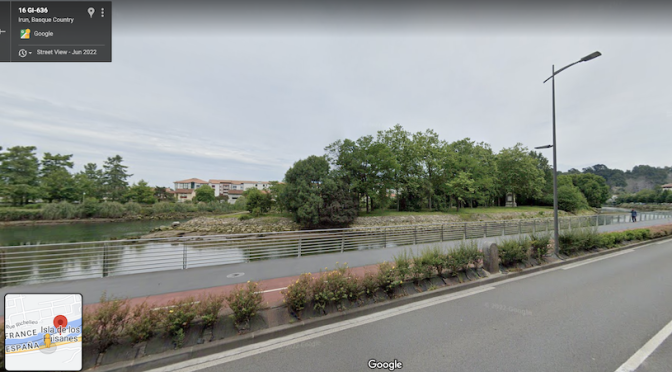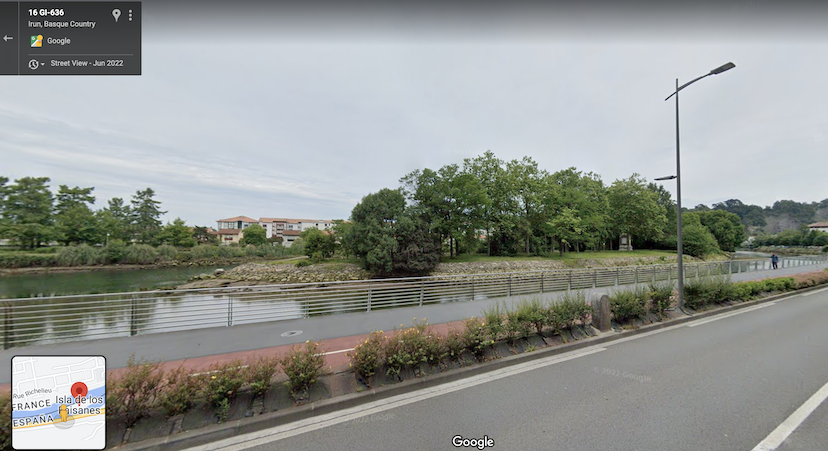Pheasant Island, called Konpantzia in Euskara, is an island jointly administered by Spain and France, swapping hands every six months. It is what is called a condominium, a territory shared by more than one sovereign power. Because of its unique position on the river that defines the Spanish-French border, the island has seen its share of history. The shared agreement also leads to some complex legal matters between the two countries.
- Pheasant Island is small, only about two acres. While Pheasant Island isn’t the only condominium in the world (Antarctica is also a condominium), it is both the longest lasting and the only one that actually alternates sovereignty between two nations.
- The ownership of, or better said jurisdiction over, Pheasant Island shifts every six months between Spain and France. In practice, administration alternates between Irun, Gipuzkoa, and Hendaia, Lapurdi. No one is allowed on the island, which sits in the middle of the Bidasoa river, which itself defines the border between France and Spain, and separates Irun from Hendaia.
- Pheasant Island is sometimes also known as Conference Island, though the shifting sands of the river banks may have actually created two islands at one point. This second name comes from the fact that several international meetings occurred on the island. Perhaps the most famous led to the Treaty of the Pyrenees. This treaty, signed on November 7, 1659, was negotiated on Pheasant Island and ended the Franco-Spanish War, which had begun in 1635. Amongst other things, this treaty had France give up its claim to Catalunya while Spain had to cede all of the territory France had gained in the previous Peace of Westphalia. Maria Theresa of Spain, Philip IV of Spain‘s daughter, was also arranged to marry Louis XIV of France. In the Meeting on the Isle of Pheasants in June of 1660, Maria crossed over from Spain to France via the island. The treaty also established the dual authority of Spain and France of Pheasant Island.
- The Treaty of Bayonne, in 1856, further solidified this status. At the time, there was a real danger of the island simply disappearing due to erosion, so what would the two nations co-own in that case? Further, Spain was asserting ownership of the Bidasoa river, which caused the legal status of the island to be reevaluated. This treaty confirmed the condominium status of the island.
- However, there was still some confusion. On May 21, 1877, Spanish authorities arrested five girls from Hendaia who had made their way to the island, at that moment under Spanish control. The French protested, saying that jurisdiction over crimes should belong to the accused’s country. On the other hand, Spain said it should belong to whoever was in charge of the island at the time of the crime. In 1901, they reached an agreement where policing would be the responsibility of the country that currently administered the Island, but if the crime involved a French or Spanish national, they would be handled by their respective national courts. It becomes quite messy when, for example, a Frenchman does something that would be a crime in France, but not in Spain while Spain is administering the island…
Primary sources: Auñamendi Entziklopedia. FAISANES, Isla de los. Available at: https://aunamendi.eusko-ikaskuntza.eus/en/faisanes-isla-de-los/ar-64848/; Pheasant Island, Wikipedia; Pheasant Island, Atlas Obscura
Discover more from Buber's Basque Page
Subscribe to get the latest posts sent to your email.



